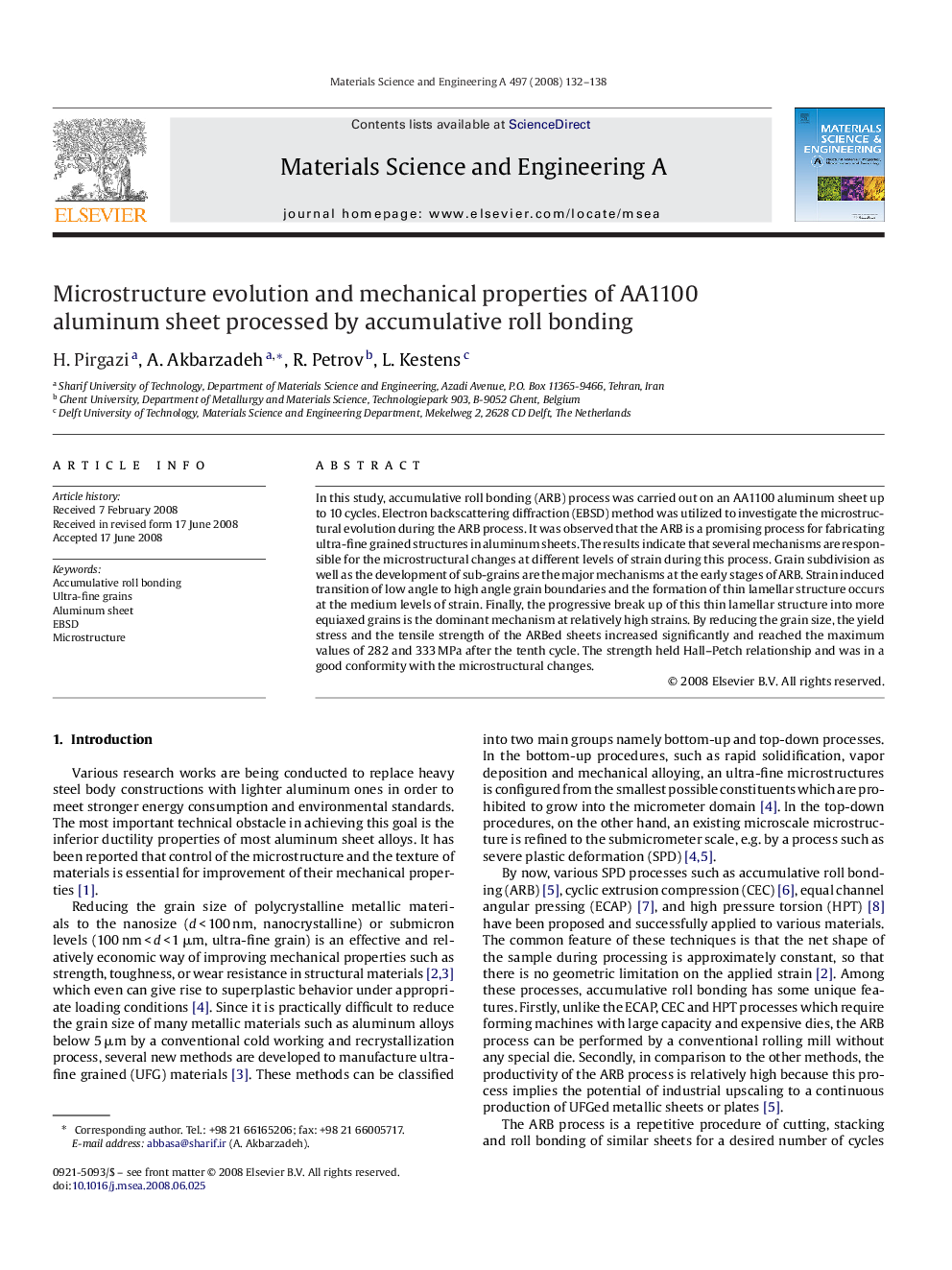| Article ID | Journal | Published Year | Pages | File Type |
|---|---|---|---|---|
| 1581493 | Materials Science and Engineering: A | 2008 | 7 Pages |
In this study, accumulative roll bonding (ARB) process was carried out on an AA1100 aluminum sheet up to 10 cycles. Electron backscattering diffraction (EBSD) method was utilized to investigate the microstructural evolution during the ARB process. It was observed that the ARB is a promising process for fabricating ultra-fine grained structures in aluminum sheets. The results indicate that several mechanisms are responsible for the microstructural changes at different levels of strain during this process. Grain subdivision as well as the development of sub-grains are the major mechanisms at the early stages of ARB. Strain induced transition of low angle to high angle grain boundaries and the formation of thin lamellar structure occurs at the medium levels of strain. Finally, the progressive break up of this thin lamellar structure into more equiaxed grains is the dominant mechanism at relatively high strains. By reducing the grain size, the yield stress and the tensile strength of the ARBed sheets increased significantly and reached the maximum values of 282 and 333 MPa after the tenth cycle. The strength held Hall–Petch relationship and was in a good conformity with the microstructural changes.
